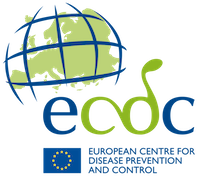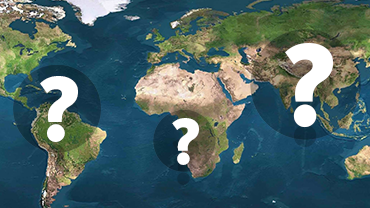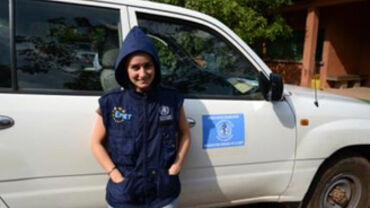Epidemiological update: outbreak of Ebola virus disease in West Africa, 9 October 2014
Latest epidemiological update on Ebola disease virus outbreak in West Africa
Event background information
Chronology of events – key dates
22 March 2014: the Guinea Ministry of Health notified WHO about a rapidly evolving outbreak of EVD [1]. The first cases occurred in December 2013. The outbreak is caused by a clade of Zaïre ebolavirus that is related but distinct from the viruses that have been isolated from previous outbreaks in central Africa, and clearly distinct from the Taï Forest ebolavirus that was isolated in Côte d’Ivoire from 1994–1995 [2-4]. The first cases were reported from south-eastern Guinea and the capital Conakry.
May 2014: the first cases were reported from Sierra Leone and Liberia [5,6] to where the disease is assumed to have spread through the movement of infected people over land borders.
End of July 2014: a symptomatic case travelled by air to Lagos, Nigeria, where he infected a number of healthcare workers and airport contacts before his condition was recognised to be EVD.
8 August 2014: WHO declared the outbreak a Public Health Event of International Concern (PHEIC) [7] and confirmed on 22 September that the 2014 Ebola outbreak in West Africa continued to constitute a Public Health Emergency of International Concern.
29 August 2014: the Ministry of Health in Senegal reported a confirmed imported case of EVD in a 21-year-old male native of Guinea.
18 September 2014: the United Nations Security Council recognised the EVD outbreak as a 'threat to international peace and security' and unanimously adopted a resolution on the establishment of an UN-wide initiative which focuses assets of all relevant UN agencies to tackle the crisis [8].
23 September 2014: A study published by the WHO Ebola response team forecasted more than 20 000 cases (5740 in Guinea, 9890 in Liberia, and 5000 in Sierra Leone) by the beginning of November 2014 [9]. The same study estimated the doubling time of the epidemic at 15.7 days in Guinea, 23.6 days in Liberia, and 30.2 days in Sierra Leone.
30 September 2014: the US Centers for Disease Control and Prevention (CDC) announced the first imported case in US of Ebola linked to the current outbreak in West Africa.
3 October 2014: In Senegal, all contacts of the imported EVD case have completed a 21-day follow-up period. No local transmission of EVD has been reported in Senegal.
6 October 2014: The Spanish authorities reported a confirmed case of Ebola virus disease (EVD) of a healthcare worker who participated in the treatment in Spain of the second Spanish patient with Ebola infection repatriated to Spain.
Epidemiological update
Situation in West Africa
Since December 2013 and as of 5 October 2014, 8 032 cases of EVD, including 3 865 deaths, have been reported by WHO (Figure 1) [10].
The distribution of EVD cases by affected countries is as follows and is presented in figure 1:
- Guinea: 1 298 cases and 768 deaths as of 5 October 2014;
- Liberia: 3 924 cases and 2 210 deaths as of 4 October 2014;
- Sierra Leone: 2 789 cases and 879 deaths as of 5 October 2014;
- Nigeria: 20 cases and 8 deaths, with last confirmed case in Lagos on 5 September 2014 (30 days as of 5 October 2014) and in Rivers State on first September 2014 (34 days as of 5 October);
- Senegal: 1 case, no deaths, confirmed on 28 August 2014 (38 days as of 5 October). All contacts have completed 21 days of follow-up.
Figure 1. Distribution of cases of EVD by week of reporting in Guinea, Sierra Leone, Liberia, Nigeria and Senegal, weeks 48/2013 to 41/2014, n=8 032*

* The bar for week 41/2014 does not represent a complete week. The solid green line represents the trends based on five week moving average plotted on the fifth week of the moving average window. The figure includes one imported case in Senegal.
The WHO Ebola response team showed that the current EVD cases present a similar course of infection, signs and symptoms when compared to previous outbreaks of EVD [9]. The incubation period was estimated to be 11.4 days with serial interval of 15.3 days.
The case-fatality rate estimated among 4 010 cases with known clinical outcome in Guinea, Liberia and Sierra Leone was 70.8% (95% CI: 68.6–72.8%) with no noticeable difference between the countries.
Situation in Guinea, Sierra Leone and Liberia
Guinea, Liberia and Sierra Leone are experiencing widespread intense transmission as per WHO categorisation [10]. The outbreak is still evolving in these three countries (Figures 2 and 3). Officially reported figures are believed to be underestimates [9]. The Guinean prefecture of Lola located in the Nzérékoré Region and bordering Ivory Coast was added to the list of affected areas on 2 October 2014 with 9 suspected cases reported, including 2 cases confirmed by the Guinean Ministry of Health. Figure 2. Distribution of cases of EVD by week of reporting in the three countries with widespread and intense transmission as of week 41 2014, n= 8 011*
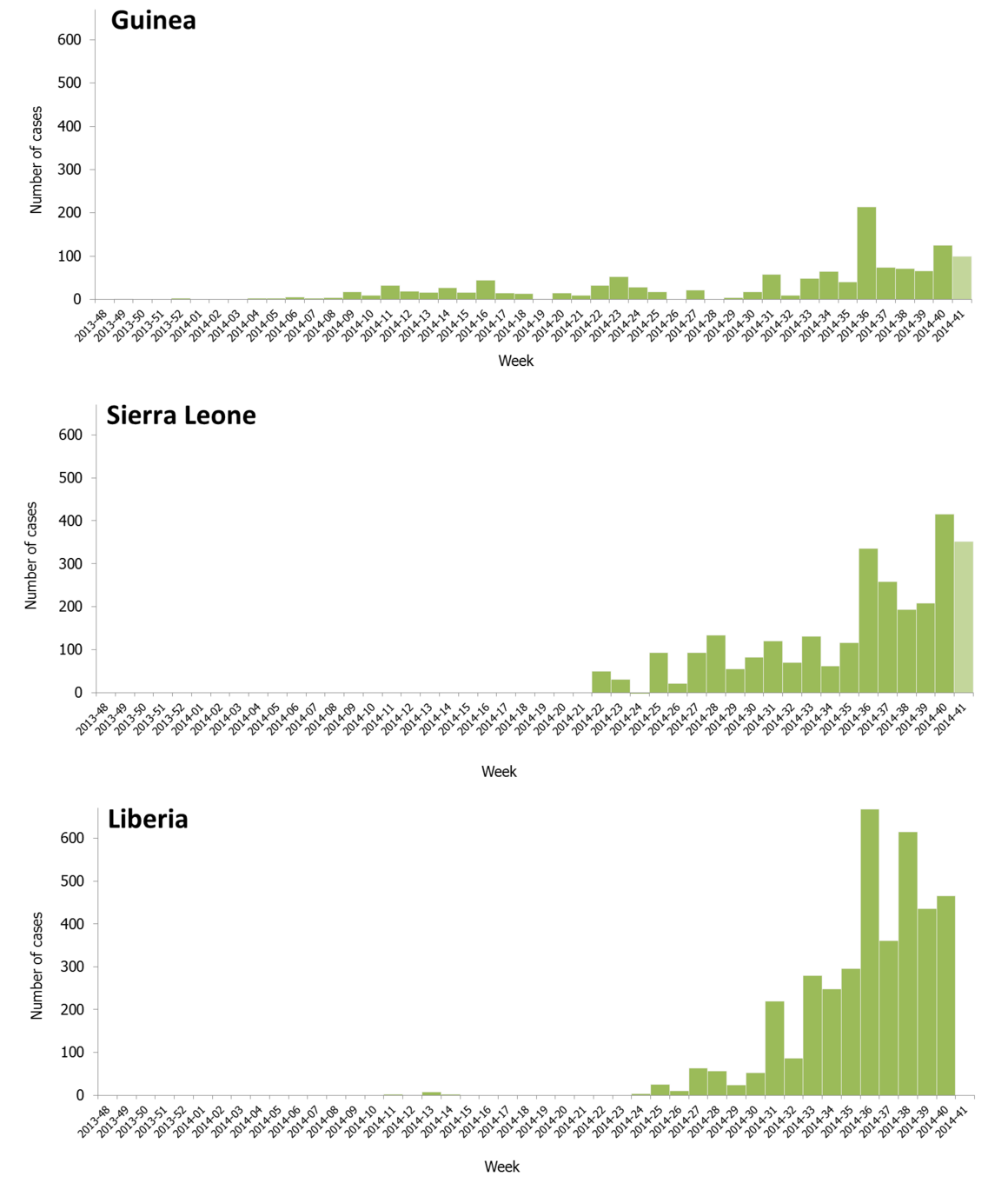
* The bar for week 41/2014 does not represent a complete calendar week. Source: Data are based on official information reported by Ministries of Health up to the end of 5 October for Guinea and Sierra Leone, and 4 October for Liberia. [10]
Figure 3. Distribution of cases of EVD by week of reporting in Guinea, Sierra Leone, Liberia and Nigeria (as of week 40/2014)

Source: Data from ministry of health reports (probable and confirmed cases).
Situation in Nigeria
As of 3 October 2014, 20 cases, including eight deaths have been notified. The date of the last confirmed case in Lagos was on 5 September 2014 and in Rivers State on 1 September 2014 [11]. All 891 identified contacts in Nigeria have completed the 21-day follow-up (362 contacts in Lagos, 529 contacts in Port Harcourt) [10].
Situation among healthcare workers in West Africa
As of 5 October 2014, WHO reported 401 healthcare workers infected with EVD of which 232 died [10]. Table 2 details the distribution of cases and deaths among healthcare workers in the four affected countries.
Table 1. Number of Ebola cases and deaths in healthcare workers (HCW) in West Africa
| Country | HCW cases (% of reported cases) | HCW deaths (% of reported deaths) |
|---|---|---|
| Guinea | 73 (5.6) | 38 (4.9) |
| Sierra Leone | 129 (4.6) | 95 (10.8) |
| Liberia | 188 (4.8) | 94 (4.3) |
| Nigeria | 11 (55.0) | 11 (55.0) |
| Total | 401 (5.0) | 232 (6.0) |
Source: data are based on official information reported by Ministries of Health as of 5 October for Guinea and Sierra Leone and 4 October for Liberia. [10]
Situation outside of West Africa
United States of America
On 30 September 2014, the US CDC announced the first imported case of EVD linked to the current outbreak in West Africa. The individual who had recently arrived from Liberia was diagnosed in Dallas, Texas. This person is not a healthcare worker and was visiting relatives in the USA. He is reported to have had a high risk exposure in Liberia prior to travelling. He was reported to be asymptomatic when leaving West Africa and remained asymptomatic while travelling and upon arrival in the USA on 20 September. He developed symptoms around 24 September, sought medical care on 26 September and was hospitalised and isolated on 28 September 2014. He died on 8 October 2014.
The US health authorities are investigating contact persons who may be at risk of infection from this patient. This excludes people that were on the same commercial airlines as the person was asymptomatic while travelling from Liberia to the USA. The person reported developing symptoms only several days after the flights and therefore was not contagious during that period.
As of 7 October 2014, the US CDC reports that the investigation of 10 contact persons with definite exposure to the case and 38 persons with possible exposure is ongoing. It is reported for daily monitoring to be made with contacts for up to 21 days after exposure to the case to check for fever and other symptoms [12].
Spain
On 6 October, Spanish authorities reported a confirmed case of EVD in a healthcare worker who participated in the medical care of the second Spanish patient repatriated to Spain with Ebola infection. The medically evacuated patient arrived in Spain on 22 September and died on 25 September. Yet, the infected healthcare worker represents the first transmission of Ebola infection outside of west Africa region Union [13].
The healthcare worker is a woman working in La Paz-Carlos III hospital in Madrid. She reportedly developed fever the night of the 29 September. According to the Spanish Ministry of Health, she participated in the medical care of the repatriated patient and was wearing appropriate personal protection equipment. She was admitted to La Paz-Carlos III Hospital on 6 October and is under strict isolation [14].
The Spanish authorities have initiated contact tracing and, as of 9 October, 58 contacts of which five are considered as high-risk contacts, are being monitored. Quarantine has been established or is under assessment for high risk contacts.
Preliminary results of the investigation point to an incident during the removal of the personal protection equipment (PPE) on 24 September as the mode of transmission.
Medical evacuations from EVD-affected countries
Fourteen of Ebola virus infected individuals have been evacuated from the EVD-affected countries (Table 2, Figure 4).
Table 2. Medical evacuation from EVD-affected countries up to 08 October 2014
Date of evacuation (in 2014) |
Evacuated from |
Evacuated to |
Profession |
Status |
Confirmed |
Citizenship |
|---|---|---|---|---|---|---|
02 August 2014 |
Liberia |
Atlanta (USA) |
Healthcare worker |
Discharged |
Yes |
US |
05 August 2014 |
Liberia |
Atlanta (USA) |
Healthcare worker |
Discharged |
Yes |
US |
06 August 2014 |
Liberia |
Madrid (Spain) |
Healthcare worker |
Death |
Yes |
Spanish |
24 August 2014 |
Sierra Leone |
London (United Kingdom) |
Healthcare worker |
Stable |
Yes |
British |
27 August 2014 |
Sierra Leone |
Hamburg (Germany) |
Epidemiologist |
Recovered |
Yes |
Senegalese |
04 September 2014 |
Monrovia, Liberia |
Omaha, Nebraska (USA) |
Physician (obstetrician) |
stable |
Yes |
US |
09 September 2014 |
Kenema, Sierra Leone |
Atlanta, Georgia (USA) |
Physician |
stable |
Yes |
US |
14 September 2014 |
Sierra Leone |
Leiden (The Netherlands) |
Healthcare worker |
Discharged |
No |
Dutch |
14 September 2014 |
Sierra Leone |
Leiden (The Netherlands) |
Healthcare worker |
Discharged |
No |
Dutch |
19 September 2014 |
Liberia |
Paris (France) |
Healthcare worker |
Discharged |
Yes |
French |
22 September 2014 |
Sierra Leone |
Madrid (Spain) |
Healthcare worker |
Serious condition upon evacuation |
Yes |
Spanish |
22 September 2014 |
Sierra Leone |
Lausanne (Switzerland) |
Healthcare worker |
Admitted |
Unknown |
Non-Swiss |
28 September 2014 |
Sierra Leone |
Maryland (USA) |
Healthcare worker |
Admitted |
Unknown |
US |
02 October 2014 |
Sierra Leone |
Frankfurt (Germany) |
Healthcare worker |
stable |
Yes |
Uganda |
02 October 2014 |
Liberia |
(USA) |
Cameraman |
Stable |
Yes |
US |
06 October 2014 |
Sierra Leone |
Oslo (Norway) |
Healthcare worker |
not known |
Yes |
Norway |
08 October 2014 |
Liberia |
Leipzig (Germany) |
Laboratory worker |
not known |
Yes |
Sudan |
Figure 4. Medical evacuation from EVD-affected countries, as of 8 October 2014
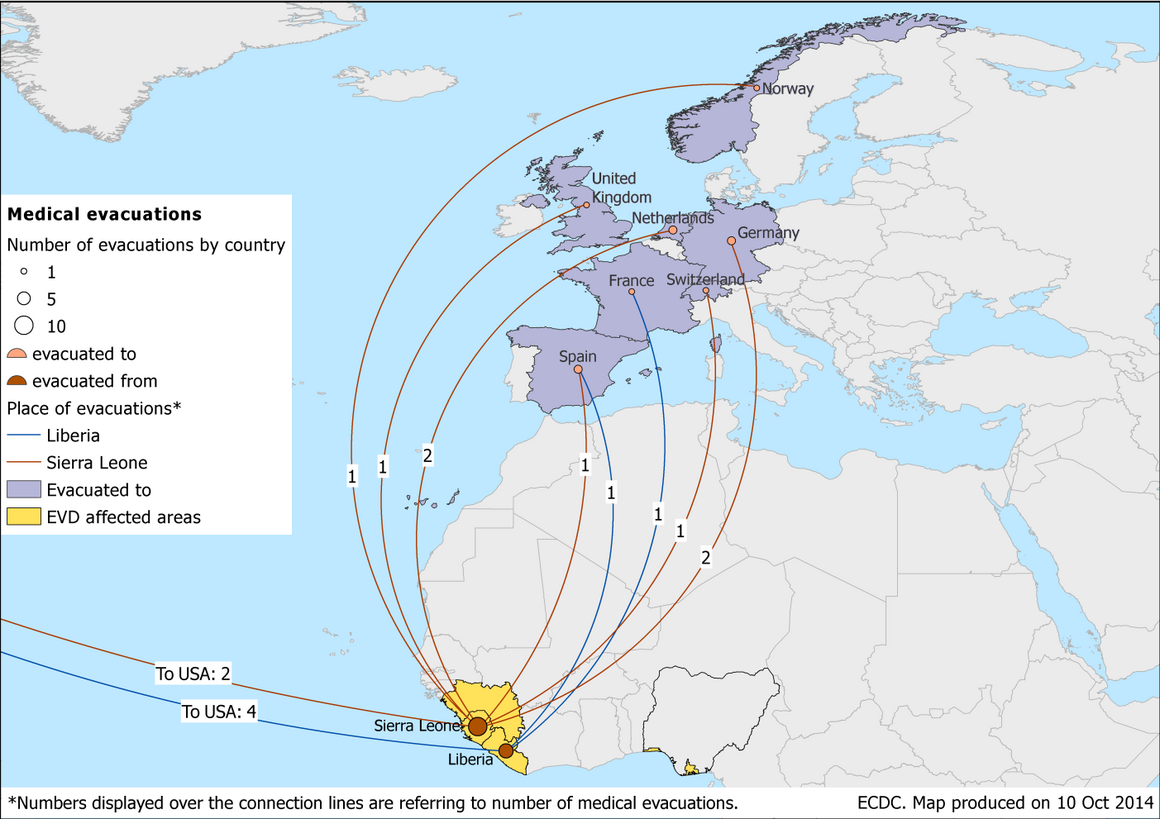
Download the data:
The following data are available to download as .csv files.
Please read The disclaimer and terms of use.
- EVD epicurve data Cumulative number of cases and deaths for the five West African countries with reported EVD cases (Liberia, Guinea, Sierra Leone, Nigeria, Senegal). Source: WHO
- EVD map dataCumulative number of cases and deaths at subnational level of the five West African countries with reported EVD cases (Liberia, Guinea, Sierra Leone, Nigeria, Senegal). Source: National situation reportFor those weeks without reported data, the most recent figures were used as best estimate of the number of case).
